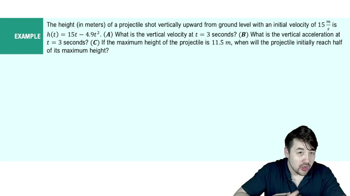Theory and Examples
Sketch the graph of a differentiable function y = f(x) that has a local minima at (1, 1) and (3, 3).
 Verified step by step guidance
Verified step by step guidance Verified video answer for a similar problem:
Verified video answer for a similar problem:



 5:58m
5:58mMaster Finding Extrema Graphically with a bite sized video explanation from Patrick
Start learning